7. The Adjustment Bureau (2011)
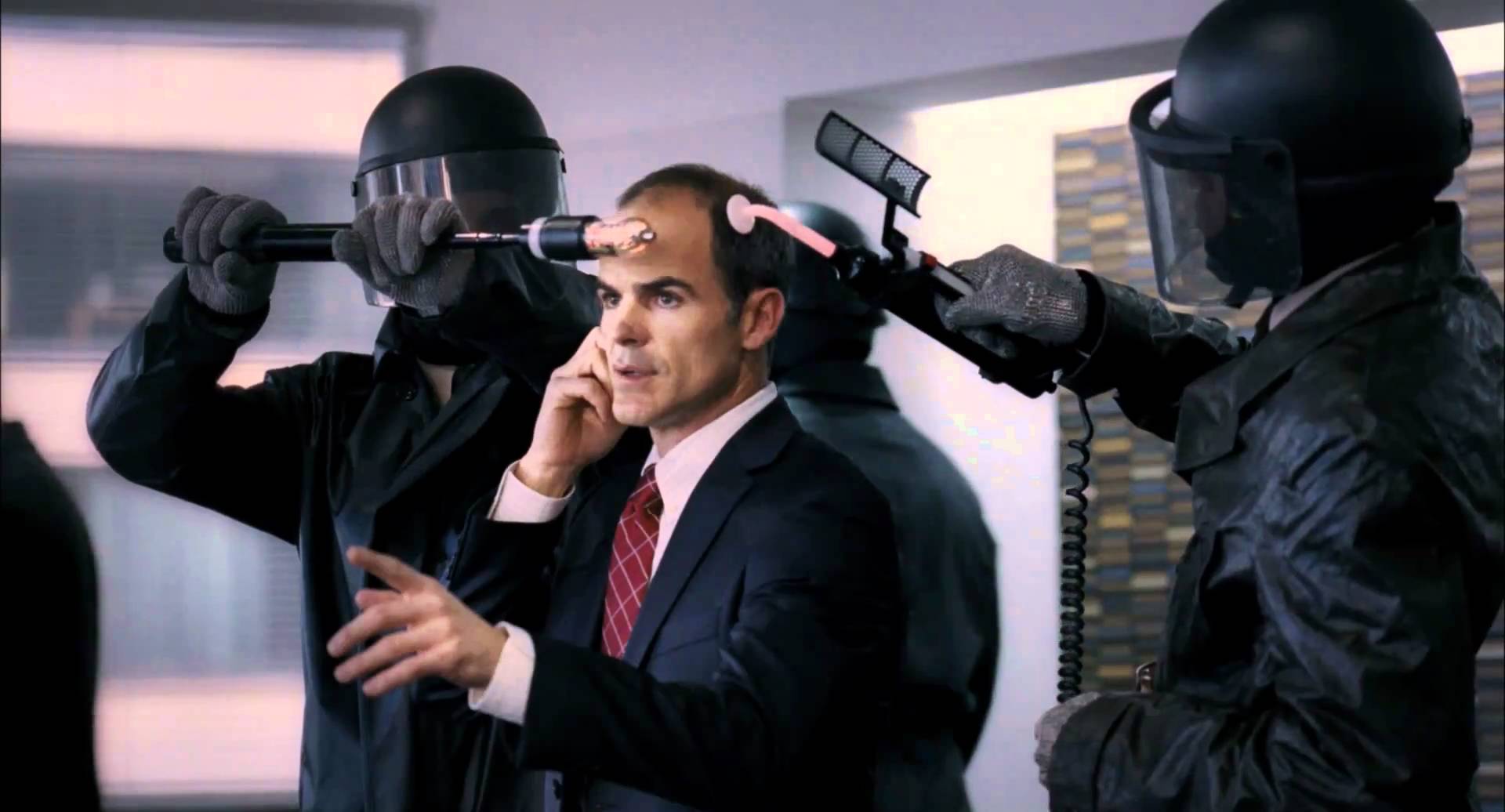
Using Dick’s 1954 story The Adjustment Team as a jumping off point, George Nolfi’s The Adjustment Bureau is a fast-paced and surpassingly charming picture. Aided by an A-list cast including Matt Damon, Emily Blunt, and Terence Stamp, and embracing some of the more romantic ingredients of a palatable and occasionally Daedalian plot, Nolfi’s is a fine feast of a film.
Where The Adjustment Team knuckled down on a real estate salesman in a corporate office with the ability to briefly step outside of reality, The Adjustment Bureau brings in a completely new plot and characters while still remaining magnificently true to the spirit of PKD. David (Damon), a dark-horse Senator in the running, meets Elise (Blunt), a dancer, and Roman candles erupt between them right away.
But the smitten pair barely swap spit before a Twilight Zone ambience unfolds involving fedora-adorned Men in Black types, part of the titular Adjustment Bureau, who can manipulate reality and destiny, preordained in a sanctified document known as “The Plan.”
As David and Elise tempt fate and attempt to reshape reality, a lot of metaphysical musings eventualize, and the associates of the Bureau alternate between menacing and sacrosanct, even recalling the angelic guardians of Wim Wenders’ Wings of Desire. Nolfi admits to many allusions and analysis of his film. “The intention of this film is to raise questions—that’s what art should do,” he has said, accordingly.
6. Eternal Sunshine of the Spotless Mind (2004)
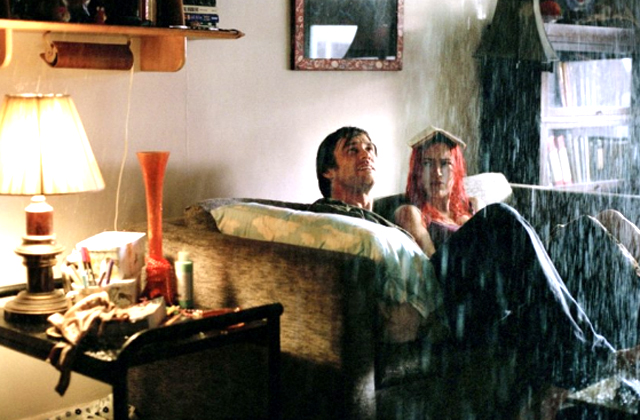
Screenwriter Charlie Kaufman’s work has always hung heavy with the influence of Philip K. Dick. Look at his 1999 breakthrough, Being John Malkovich, for instance, where characters enter a shared conscious state in the mind of actor John Malkovich. A similar notion is entertained in PKD’s 1965 dystopian novel, The Three Stigmata of Palmer Eldritch, where a psychedelic drug, Chew-Z, offers almost the exact same communal experience.
Kaufman’s other major films, Adaptation and Synecdoche, New York, each explore Dickian motifs, so, at the very least, PKD is a muse if not a direct spur. As Kaufman’s biographer, Doreen Child, points out in her book, Charlie Kaufman: Confessions of an Original Mind, “[Kaufman] has been an admirer of Philip K. Dick’s writing since his friend from college, Paul Proch, turned him onto his work…”
Arguably Kaufman’s greatest collaboration, with director Michel Gondry — a career best for him as well — the romantic sci-fi spectacle Eternal Sunshine of the Spotless Mind, exists, it seems, entirely in tune and melody with PKD.
A couple, Joel (Jim Carrey) and Clementine (Kate Winslet) undergo an extreme procedure to erase one another from their memories after their relationship hits the rocks. Through the mechanism of loss they discover the love they had and the anguish that follows is deftly and gracefully pronounced. The business that provides the service, Lacuna Inc., is pure PKD, benefaction mind alteration for a trivial price with far-reaching repercussions. It’s an intricate, and intimate meta-valentine, Eternal Sunshine is part laudation, categorically, and one of the finest post-PKD films around, period.
5. Total Recall (1990)
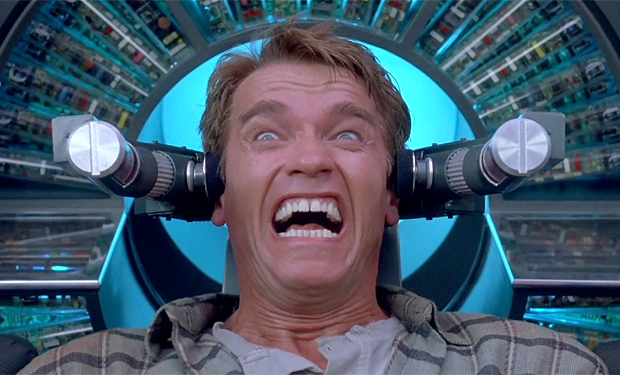
“What we find in Dick is an absence of truth and an ambiguous interpretation of reality,” says director Paul Verhoeven. “Dreams that turn out to be reality, reality that turns out to be a dream.” And so we have Total Recall, the first and finest loose adaptation of We Can Remember It for You Wholesale, which stars Arnold Schwarzenegger, at the height of his popularity, in one of his best and most OTT ultra-masculine roles.
Schwarzenegger is Douglas Quaid, a plebeian construction worker on Earth in the year 2048, who has strange memories of Mars. His wife, Lori (Sharon Stone), seems perfect in every way, and that, to anyone paying close attention, is a flag as red as the Martian landscape. Via an ill-advised session at Rekall — a conglomerate happy to provide memory implants, like extreme furloughs without any real danger for their customers — Quaid soon discovers previously suppressed memories suggesting a massive conspiracy that could take him directly to, you guessed it, the Red Planet.
Total Recall is overrun with profanities and excessive violence, memorable one-liners, gruesome sight gags, and, suitably, a shit ton of razor-sharp satire (perhaps carried over from Verhoeven’s previous successful sci-fi actioner a few years before, RoboCop).
Verhoeven’s visuals are astounding as are his alien landscapes and futuristic imaginings. During Total Recall’s production it had a massive budget, for it’s time it was considered one of the most expensive films ever produced (approx $60 million by some estimates), and every cent is seen on the screen. The post-punk production design and showy special effects add to the arresting, at times bombastic, circumstance. Total Recall was the first blockbuster to develop from Dick, though certainly not the most delicate or introspective, but it’s hyper, hilarious, and full of pep.
4. A Scanner Darkly (2006)
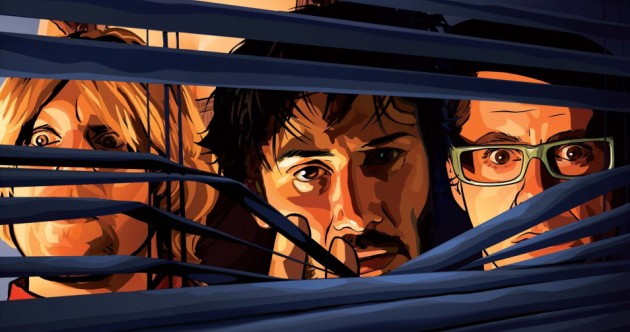
Linklater uses the surreal rotoscoping process of Waking Life to adapt what’s perhaps the ultimate sci-fi drug novel, 1977’s A Scanner Darkly. It’s one of Dick’s most personal stories, and a book which easily stands shoulder-to-shoulder with classics on the subject, like Burroughs’ “Naked Lunch” or Thompson’s “Fear and Loathing in Las Vegas”, and it’s also one of the most faithful adaptations of any PKD’s work.
Linklater’s script bristles with smart, snappy dialogue, and frequently there’s an impressively assured visual style suffusing the cramped interiors and panic-stricken characters with a feverish and authentic sense of place.
The top-notch cast includes Keanu Reeves, Robert Downey Jr., Woody Harrelson, and Winona Ryder, though the performances are still a tad inconsistent (Downey Jr. always delivers, Rory Cochrane is great in a peripheral role, but Reeves and Ryder frequently falter). That said, the story is instantly compelling — though the intentional druggy haze occasionally muddies the sometimes hard to follow plot — making for often alarming, and scary stuff.
Robert Arctor (Reeves) shares his California home with a shady assortment of pals, and along with his girlfriend, Donna Hawthorne (Ryder), spend a lot of time scoring drugs, taking them, and having deeply stoned discussions. Arctor, it turns out, is leading a double life as an undercover narcotics agent, infiltrating not only his friends lives, but trying to trail a source responsible for bringing Substance D into the city.
Substance D is a powerful new drug, highly potent and addictive, it can render it’s abuser quite crazy as it splits their brain into two distinct identities as the left and right hemispheres slide out of sync. Is Arctor closing in on a major dealer or is it only himself?
For all its gags — Arctor’s ingenious scramble suit, which keeps him anonymous when doing his detective work, is a visual, imaginative wonder — gimmickry, genre kicks and ideas, A Scanner Darkly is, at heart, a deeply sorrowful picture where no one, good or bad, goes unpunished. The film, like the novel, is a subversive classic.
3. Minority Report (2002)
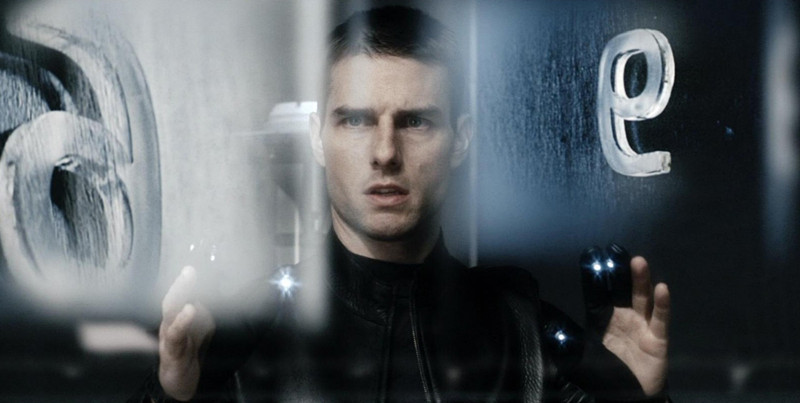
Minority Report is that rare consummation combining Hollywood heavies (Steven Spielberg and Tom Cruise), an ethically and philosophically complex speculative fiction tale from Dick (culled from his 1956 short story). where not only is the end result a dutiful adaptation, it’s a savvy, brisk, blockbuster, overfull with excitement and dernier cri.
Noir undercurrents ride with action and violence in a contemplative quandary as future cop Captain John Anderton (Cruise), part of a PreCrime Unit who use psychics (including the brilliant Samantha Morton), dubbed “precogs”, to predict and prevent deadly crimes before they occur.
Competently propped by Spielberg’s favorite cinematographer, Janusz Kamiński (Schindler’s List, Saving Private Ryan), the deeply metaphysical and meaningful spirit of Ingmar Bergman is often evoked — the appearance of Max von Sydow in a supporting role as Director Lamar Burgess helps seal the deal — creating artful visual tableaus of 24-karat quality. It’s a tour de force for all involved.
As an interesting aside, much of the social commentary and futuristic crystal gazing, including personalised computer advertisements, drone-strike matter of course, and institutionalized inequity, seem incredibly prophetic, anticipating the social media, NSA, and civil unrest zeitgeist that today is inescapable. Spielberg really gets PKD, here’s hoping he’ll consider adapting more of his work in the future.
2. Blade Runner 2049 (2017)
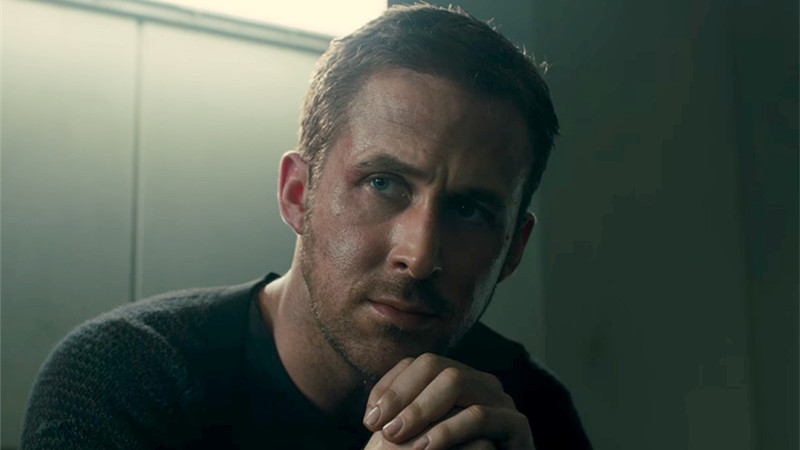
Working closely with screenwriters Hampton Fancher (who co-wrote Ridley Scott’s Blade Runner back in 1982) and Michael Green (2017’s Logan), and his sensational cinematographer Roger Deakins, visionary Canadian film director Denis Villeneuve did the near impossible task of following up Scott’s Blade Runner with a sequel that retains much of the tactile splendor and future noir poetry of the original while manufacturing an objet d’art that is perhaps even more emotionally engaging and narratively more complete.
Unspooling some thirty years after the first film, Ryan Gosling is K, a replicant who hunts rogue replicants and, like Rick Deckard (Harrison Ford) before him, retires his quarry using deadly means. When K discovers evidence suggesting that a replicant has reproduced and had a child, he is charged with murdering the child to prevent a replicant uprising.
While 2049 certainly lacks the iconic villains of the original (Jared Leto’s Niander Wallace and Sylvia Hoeks’ Luv are intriguing characters but lack the depth, dynamism, and grandeur of Rutger Hauer’s Roy Batty and Daryl Hannah’s Pris), it still offers up an emotive, stirring, and stunning spectacle.
The dystopian future presented onscreen is equal parts gorgeous and ghoulish, and many of PKD’s big questions and recurrent verses are elegantly displayed (the AI doomed romance between K and Ana de Armas’ Joi is truly heartbreaking, and the Christian symbology and water motifs, to choose but one example, is gracefully realized).
A sublimely articulated mindbender, seductively crafted, steeped in mystery, and one that teases the audience with numerous ambiguities, and teasing puzzles, Blade Runner 2049 isn’t just one of PKD’s finest silver screen embodiments, it’s one of speculative fiction’s crown jewels. This is a film that, like its predecessor, will be discussed, dissected, revisited and extolled for decades.
1. Blade Runner (1982)
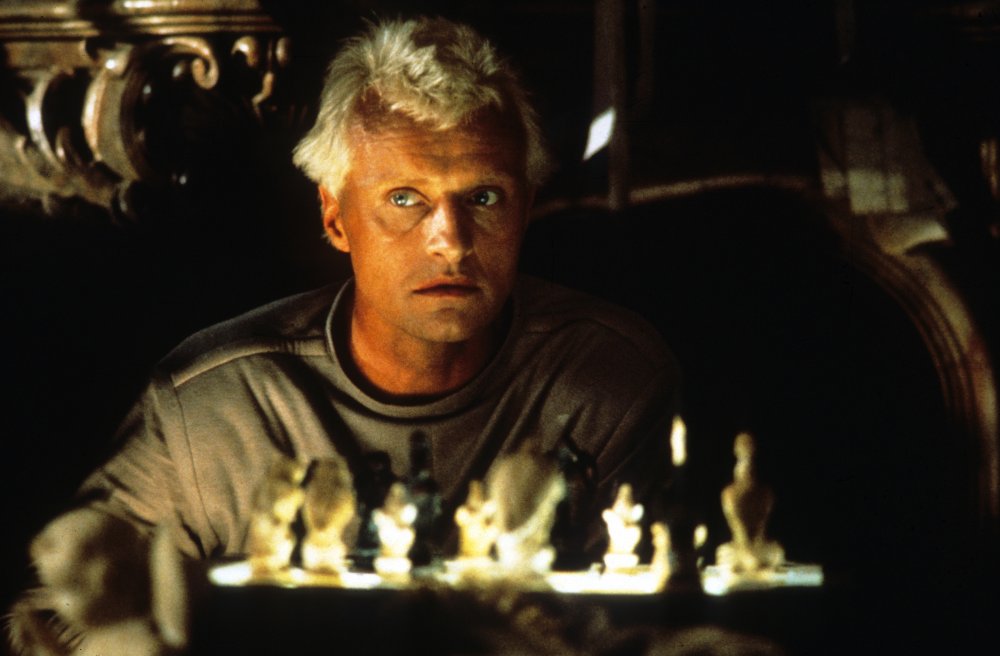
It’s irrefutable that the most acknowledged and enduring adaptation of Dick’s work stems from his 1968 masterpiece, Do Androids Dream of Electric Sheep? With Blade Runner, Ridley Scott made a profound paranoia dystopia, one that engendered cyberpunk, and amassed a magnanimous cult following.
Set in the high-tech, low-ethicality sleazy jungle of an overpopulated Los Angeles to come, Scott and Dick united to present an apocalyptic prison of the future, hyper-abundant in detail and destitution, the citizenry suffer as the corporations thrive. Sound familiar?
The scruples-free Tyrell Corporation designed “replicants”, human-like beings who slave on off-world colonies with a limited lifespan, that are more and more rebelling against their masters and need to be reigned in (read: destroyed). Enter Rick Deckard (Harrison Ford), a “blade runner” brought out of retirement, reluctantly of course, to track down and kill some particularly feisty replicants (which include now iconic performances from Rutger Hauer and Daryl Hannah).
As Deckard and the audience grow increasingly skeptical over right and wrong, Tyrell’s motives, and the replicants themselves, fascination and apprehension reach crescendo. That Deckard doubts, in overly suspicious fashion, his very identity, the postmodern pastiche of the film reaches dizzyingly profound heights.
Adding to PKD’s vision, ideas from other genres (film noir, romance, and horror most notably) as well as specific seminal films (Bride of Frankenstein and Metropolis in particular) pop up and poise with soap bubble inertia and delicacy.
Blade Runner is also ripe with religious allegory and metaphor (“meta” being the operative word), and the fact that numerous cuts of the film are in circulation (the Workprint, Theatrical Cut, Director’s Cut, and the Final Cut being the best known), none of which deemed definitive, suggesting that no authentic version exists. This idea, that the “real” version, if one subsists, does so in plain sight, like one of the replicants Deckard must destroy, though it wants to live, yet be left alone, is perfect. How fitting is that?
Author Bio: Shane Scott-Travis is a film critic, screenwriter, comic book author/illustrator and cineaste. Currently residing in Vancouver, Canada, Shane can often be found at the cinema, the dog park, or off in a corner someplace, paraphrasing Groucho Marx. Follow Shane on Twitter @ShaneScottravis.